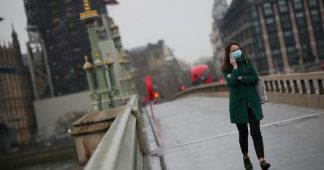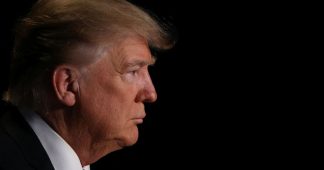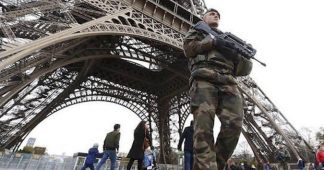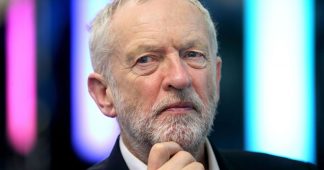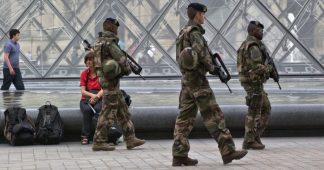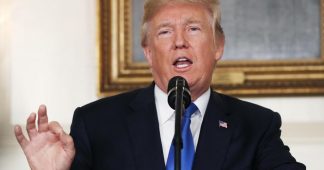A decades-long push to concentrate power in the Oval Office through emergency response legislation has made the Office of the President more powerful than ever.
by Raul Diego
October 21st, 2020
On the eve of the 2020 election, no American president has enjoyed more unrestrained power than Donald J. Trump, who has inherited decades of policies and legislation that have given the American head of state the ability to suspend all constitutional rights and habeas corpus for its own citizens, carry out assassinations, torture prisoners and impose sanctions on sovereign nations, to name just a few of the 120 discretionary emergency “powers” the office currently has at its disposal.
Trump has invoked emergency powers, at least, eight times during his administration. Simply declaring an emergency makes all sorts of constitutional violations possible. Depending on which sphere of political power requires a form of executive intervention, the president has a bevy of “emergency” options at his disposal beyond the reach of Congress or any other mitigating factors. His decision to assassinate Iranian general, Qassem Soleimani, was one such example where the 2002 Authorization for Use of Military Force, also known as the War Powers Act, was cited as a legal justification for the general’s murder.
The War Powers Act is but one of many legal “emergency power” dispositions increasingly afforded to the office of the presidency. A recent article by Andrew Cockburn in Harper’s Magazine highlights a little-known set of documents drafted by the Department of Justice’s Office of Legal Counsel called presidential emergency action documents or PEADs, which detail the actions a president is unilaterally entitled to take in the event of a declared emergency. These include all the constitutional violations mentioned above as well as a president’s prerogative to “seize control of the Internet” among other measures.
PEADs have been kept from the American public, but are common knowledge among critical White House staff and other government officials. According to Cockburn, PEADs have been gradually accumulating over the years as an “integral part” of the Continuity of Government or COG program; an emergency plan hatched deep in the bowels of the post-war state to protect the edifice of power, which established a shadow government and other ’emergency powers’ justified by the threat of nuclear annihilation, incessantly propagandized during the Cold War; the ultimate emergency from which all others would spring to pave the way for the incremental concentration of power in the executive.
Mein Führer, I can walk!
At the end of Stanley Kubrick’s “Dr. Strangelove or How I Learned to Love the Bomb,” the crippled Nazi character after whom the movie is named, miraculously regains his ability to walk just as a nuclear conflagration engulfs the world. Fascism thrives when panic and fear reign supreme, allowing critical circumstances – whether real or manufactured – to justify the evisceration of civil liberties and human rights.
The American national security state that developed in the post-war period has found one ’emergency’ after another to drive through policies and legislation that serve its interests. The office of the president is the logical target for a vast military industrial complex that needs to steer clear of Congressional oversight or public scrutiny in order to maintain control over its hugely profitable and immoral war enterprises.
After the tumultuous 1960s, which exposed many of the darkest secrets of the American national security apparatus and all of its murderous tentacles, the establishment experienced an existential crisis as powerful, grassroots social movements emerged to put real pressure on the governing elites to answer for their actions and find remedies for patently unequal rights in America. The anti-war movement, along with the revelations of the Church Committee, Watergate, and the extent to which presidents had used so-called emergency powers to circumvent Congress and the constitution, shed the pretense of democracy.
A futile effort to curb presidential emergency powers by the Special Committee on the Termination of the National Emergency in the early 1970s, which Frank Church co-chaired, was soon followed by an expansion of these powers in the International Emergency Economic Powers Act (IEEPA) of 1977, enabling the president to declare national emergencies based on very broad criteria of “extraordinary circumstances.”
The style council
The IEEPA allows whoever is in the Oval Office to unilaterally and without evidence of wrongdoing, impose sanctions on entire countries or single individuals. The law has since been used as the framework for other emergency authorization protocols, such as the legal device used by the U.S. Treasury’s Office of Foreign Assets Control to freeze any American’s bank account without any meaningful explanation.
It was this piece of legislation that George W. Bush used as a basis for Executive Order 13224, which blocked the assets of terrorist organizations. These same powers were enhanced in provisions of the Patriot Act, itself another piece of ’emergency’ legislation. Bush was the first president to actually implement the shadow government proscribed in the COG procedures after September 11, 2001.
There are currently more than 30 active declared “emergencies,” many of which go back decades. In the opening paragraph of the report issued by Church’s Special Committee on the Termination of the National Emergency, the authors conceded that “a majority of Americans alive today have lived all of their lives under emergency rule.” This sobering conclusion is far more relevant today, almost 40 years later, when each subsequent administration has done its part to expand the president’s authority. None more so than Barack Obama, who dramatically expanded presidential emergency powers with two executive orders in 2012, which decreed almost monarchical powers over the whole of U.S energy and transportation infrastructure, domestic resources like food and water, the authority to force citizens to “fulfill labor requirements for the purposes of national defense” and the takeover of private communications networks by DHS.
All of these and more powers are currently in the hands of Donald Trump, whose style may rub some people the wrong way. But, they won’t be rescinded by the next administration. Indeed, now that the office of the presidency is a de facto dictatorship, style is really all that’s left.
Feature photo | President Donald Trump points to a supporter as Trump speaks at a campaign rally, Oct. 19, 2020, in Tucson, Ariz. Ross D. Franklin | AP
* Raul Diego is a MintPress News Staff Writer, independent photojournalist, researcher, writer and documentary filmmaker.
Published at www.mintpressnews.com
